jane of my existence
Or, the thrills, schemes, and treasons of the Unsinkable Jane Boleyn, Viscountess Rocheford.
Hello friends!
Hope all is well with you! I’m writing this newsletter in the brief lull between copy edits and first pass pages for Our Rotten Hearts, which is careening toward being a real, actual book with alarming speed. It’s also possible I may have something beautiful, rectangular, and cover-ish to share in the next newsletter? I promise nothing but encourage wild speculation.
Also, we now have an official release date! Which I discovered as all real-life authors do: by periodically checking my author page on the Penguin Random House website until the date appears. Our Rotten Hearts will be coming to bookstores and e-retailers across North America on the pleasingly symmetrical date of 2/25/25, so jot that down I guess. (Dirtbag International, I solemnly swear to let you know if and when I have news of any sort for you! I hope I will!)
All right, enough business. This week we’re taking a wander back to my old stomping grounds of Tudor England to talk about one of my favorite schemey bitches of the period:
Jane Boleyn, Viscountess Rocheford, AKA Ol’ Fancy-Pants Backstab McGee Herself!

Three notes before we get going. First, I love this woman to death and am therefore not going to be impartial. Second, I’m defaulting to the pettiest and most bitchy explanation for all historical facts and am therefore not going to be impartial. Third, I think we can all agree that fuck Henry VIII, and you can probably guess what that means for my willingness to be impartial.
The future Viscountess Rocheford was born as Jane Parker in Norfolk, England sometime around 1505. Tudor history enthusiasts will know you should never trust anyone coming out of 16th-century Norfolk, a prejudice Jane will confirm. The Parkers were a fancy high-up noble family, making Jane some kind of obscure cousin to Henry VIII himself. So Jane was a big-deal bitch and knew it right out the gate.
Also, brief aside: I did a little family tree sleuthing and sure enough the “Parker” in “Camilla Parker Bowles” traces all the way back to Jane Parker Boleyn. England, kindly explain why you only have 11 families.
How to Succeed in Tudor Court Without Really Trying
Jane was sent to court to be a lady in waiting sometime around 1520, where she made a name for herself by being A) hot, and B) a great dancer. These were two of the three skills you needed to do a good job in the court of Henry VIII, and fortunately Jane also had the third: the ability to double-cross literally anyone. But we’ll get to that.
Because first, Jane had to get married! And oh boy, did she.
Jane Parker married George Boleyn in 1525, when they were both refreshingly about 19 or 20. Yes, that George Boleyn: older brother of Anne Boleyn, memorably played by Pádraic Delaney in the Dirtbags Through the Ages cultural touchstone The Tudors.
Anne was still a lady-in-waiting to Katherine of Aragon at this point, as was Jane. But the Boleyns were a family on the rise, so this was absolutely an advantageous marriage from a political point of view. Jane and George received numerous gifts of palaces, estates, and noble titles from the king, including the Viscount and Viscountess Rochford. They were rich as balls and incredibly powerful at court, especially as Jane’s sister-in-law Anne went from Hot Side Character to Hot Main Character in the Henry VIII saga over the coming years.
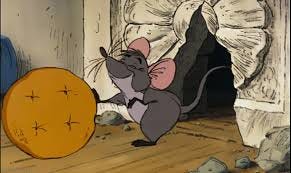
If Jane and George were different kinds of people, this might all have been good news for them! But they were very much themselves, and as far as gossipy historians can speculate, their marriage was a goddamn nightmare.
Here Follows Wild Ahistorical Speculation
The usual story—and the one I like—is that George was an arrogant horny asshole and Jane was a jealous power-hungry bitch who hated him. It certainly seems like it would’ve been easy to hate George Boleyn. His friends wrote a number of poems about him that all boil down to “Jesus, George, could you keep it in your pants for like ten minutes?” and since all the Boleyns were ambitious social climbers, I see no reason why George would have been different in that respect. Jane, whose family outranked George’s as far as I can tell, was probably sick of him on both counts.
Historians also get all bent out of shape over whether or not George Boleyn was secretly gay, which would admittedly have put a damper on his marriage to Jane. Some believe he was later charged with sodomy in addition to a number of other crimes, which is problematic for a number of reasons:
Early modern psychology had no particular category for gayness, or really for sexuality as a form of identity at all
Up until the 19th century or so, “sodomy” was a catch-all legal term for any sex not intended for procreation, not just of the gay variety
George was also charged with witchcraft, but we don’t use that evidence to say he had a cauldron full of eye of newt in his basement
The historical record doesn’t actually seem to say sodomy was among the charges anyway
However, it is 🌈Pride Month🌈 and I’m the one writing this newsletter, so: George Boleyn was queer. You heard it here first. Yass, queen(‘s brother).
Anyway, while Jane and George’s marriage was getting progressively shittier by the day for one reason or another, Anne Boleyn had a real roller coaster of a decade. I’ll skim over the whole King’s-Great-Matter, divorce, pope-fight, formation-of-the-Church-of-England of it all, since the focus of this newsletter is not Tudor English politics but rather one schemey woman riding the wave. Point is, Anne became queen, making Jane’s status as her sister-in-law extremely valuable.
Until, of course, it wasn’t.
All’s Well That Croms Well
Henry VIII’s feelings for Anne soured over time, first gradually and then sorta all at once. By 1536, it was extremely clear which way the wind was blowing. And so my girl Jane got to work doing what she did best: betraying everyone around her to protect her own neck. As follows (roughly):
Jane Boleyn: hey, Cromwell, my guy
Thomas Cromwell: what
Jane: you’re trying to get rid of Anne for the king, right?
Cromwell: oh my god could you help please, Henry will behead me if I can’t get rid of his wife and I would very much prefer that not happen
Jane: if I said Anne was gossiping to me about how the king can’t hold an erection would that be useful
Cromwell: it would help, sure. But I was sorta thinking more accusing her of a five-way witchcraft orgy?
Jane, blinking rapidly: goddamn, Cromwell
Cromwell: is that a yes?
Jane, thinking on her feet: can my useless husband be one of the members of the five-way orgy?
Cromwell: you’re willing to accuse your husband of black magic incest?
Jane: I will say yes to literally anything you ask me
Cromwell, impressed and mildly turned on: damn, I should have married you instead
Jane: oh, Cromwell, you tease
Bonkers as these charges were, they went through. Both George and Anne were arrested for various witchcraft sex crimes, along with four other schmucks. Jane gave evidence against them at trial, and both Boleyn siblings were beheaded in May 1536. Anne’s beheading went much better than George’s did. Use your imagination.
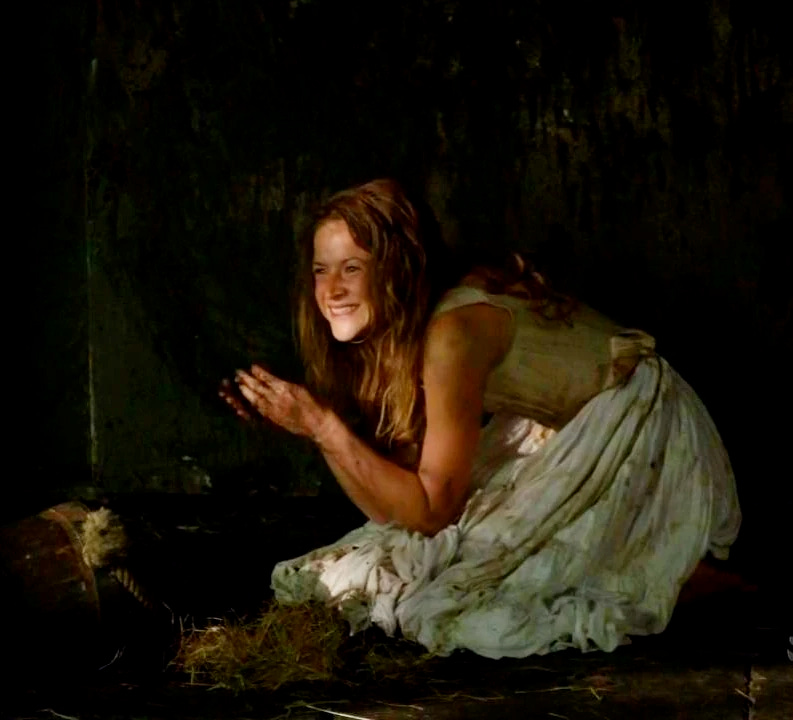
One might think being so closely associated with the king’s new Greatest Enemies would make things end badly for Jane. But my girl knew how to play the game! She took a brief hiatus from court, allegedly to mourn her late husband but probably to focus on getting Thomas Cromwell to cut her a yearly paycheck as thanks for her help, which it seems he did.
Then, after a few months, when Henry VIII was aggressively hitting on Jane Seymour, Jane Boleyn popped back up at court and said “Hey, friends, remember me? I’ve been lady-in-waiting for two queens already, feel like I’d be great at it for this new one!”
And she got the job! Within the year, Jane Boleyn was back on the royal payroll, swanning around in fancy dresses at court, maintaining the title of Lady Rocheford. I love her so much.
Lady in Waiting? More Like Lady in GREATing
The reign of Queen Jane didn’t last long, and Jane Seymour died in childbirth the next year in 1537. This is fortunate only in the sense that I can logistically handle one main character named Jane at a time.
Jane Boleyn stayed on at court through Henry’s three years of mourning, and then when Cromwell arranged the king’s fourth marriage to Anne of Cleves, Jane was a lady-in-waiting for her too! Ma’am! Your résumé! It is stacked! Four queens straight! Incredible.
The whole reason Jane stayed on so long at court was because she knew how to help the king get what he wanted. So just as she had during Henry’s “I’d like to behead Anne Boleyn” era, Jane threw her hat in the ring to help him divorce Anne of Cleves. She testified that Henry and Anne had never consummated their marriage, which opened the door for a divorce. (Incidentally, Anne and Henry probably never had consummated their marriage, which I blame less on Anne not being hot and more on Henry being a forty-nine-year-old pervert with a stinky leg ulcer, but whatever.)
The divorce went through, and Henry married Queen Number Five, Katherine Howard. And! Guess! Who! Became! Lady-in-waiting for the fifth time!
THAT’S RIGHT, IT’S SCHEME QUEEN JANE BOLEYN!
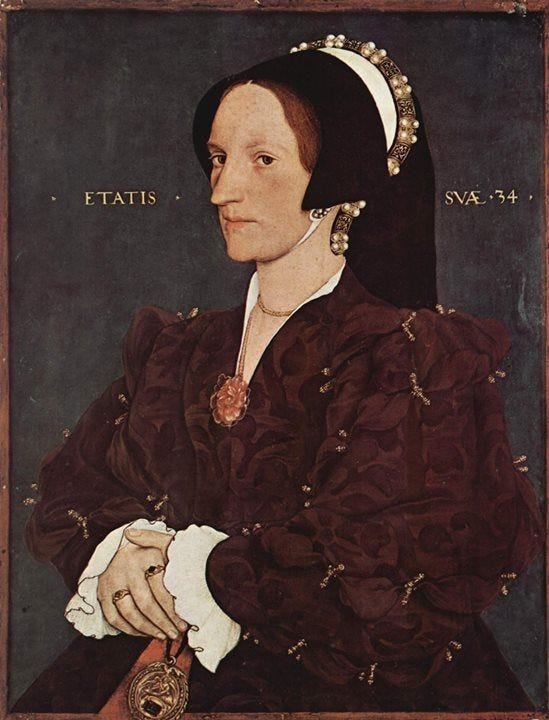
I swear to God, at this point it’s like Jane is Queen Margaret from Shakespeare’s Richard III, looming around hallways yelling spooky prophecies at people before they get divorced or beheaded. She is a cockroach of a woman and she will not be killed. She is fabulous. We should all strive to be more like Jane Boleyn in her Villain Era.
Listen, Five Out Of Six Ain’t Bad, Jane
We should not, however! Strive to be like Jane Boleyn in her 1541–1542 era!
In 1541, Henry VIII found out that his teenage wife Katherine Howard had been “sexually indiscreet,” which could mean that she was having affairs with people closer to her own age because she was a teenager, or could mean she was sexually abused by other men at court, as she almost certainly was earlier in life. It’s all deeply fucked up. Either way, Henry’s fragile ego couldn’t bear it, and he had Katherine arrested, along with the majority of her household.
Including—alas—Jane Boleyn, Viscountess Rocheford.
Under the investigation of Archbishop of Canterbury Thomas Cranmer, Jane was found guilty of arranging secret meetings between Katherine Howard and the courtier Thomas Culpeper. I haven’t found any other historians who agree with me that Jane must have been framed, but come on. Does this sound like the “throw everyone I’ve ever met under the bus to make sure the king executes them and not me” Jane Boleyn we know and love? I personally believe that Henry was starting to get suspicious of this schemey lady who’d been around for “divorced, beheaded, died, divorced” so far and decided to get rid of her while he was cleaning house. I have not a scrap of fact to support this.
Both Jane and Katherine were convicted in early 1542 and were sentenced to death. Jane did…not deal with this well. She was sent to the Tower of London, where she reportedly descended into a “frenzy,” as frankly I would have too if Smelly Leg Ulcer Tyrant had decided to kill me.
Legally speaking, this should have meant that Jane couldn’t be executed, as the death penalty didn’t apply to those found legally insane. However, Henry VIII, like the charming man he was, passed a special law saying “Actually I can execute the mentally ill if they’re guilty of high treason, especially if their name is Jane Parker Boleyn Viscountess Rocheford.” Because fuck him very much.
Jane Boleyn was executed on February 13, 1542 and was buried in the Tower of London next to Katherine Howard, Anne Boleyn, and George Boleyn. I want to believe in ghosts almost exclusively so I can imagine Jane and George shit-talking each other under the floor of the Tower chapel for all eternity.

Coda: Was Jane Boleyn actually a schemey heartless bitch? Or was she just a woman trying to make it through a patriarchal and dangerous court as best she could? Has history been slandering her good name for hundreds of years?
We can argue, but I know which option I find more fun.
Anyway, that’s all for this time, my friends! Thank you for joining me through the wilds of history’s worst, and in this instance by “worst” I mean “my very most favorite.”
Until we meet again, be well, and please congratulate me for not using the pun “Cranmer vs. Cranmer” anywhere in this newsletter, because it made me laugh when I thought of it but it doesn’t actually make any sense in this context, and recognizing that shows admirable restraint on my part I think,
-Allison




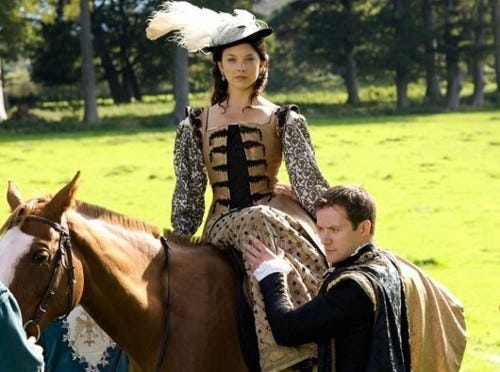


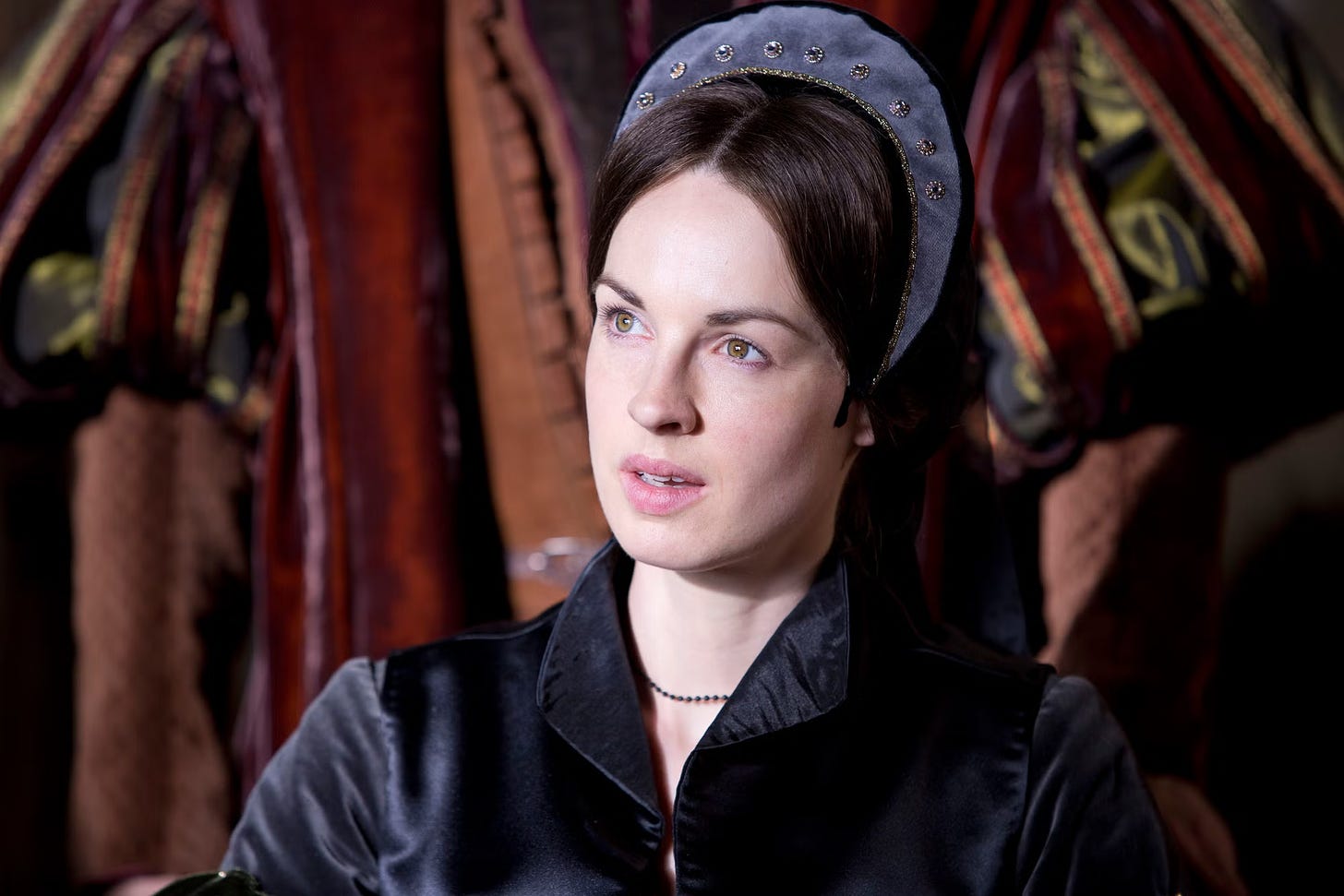
“Please tell me why England and only has 11 families” brilliant!!
It's the "Yass, Queen ('s brother)" for me.